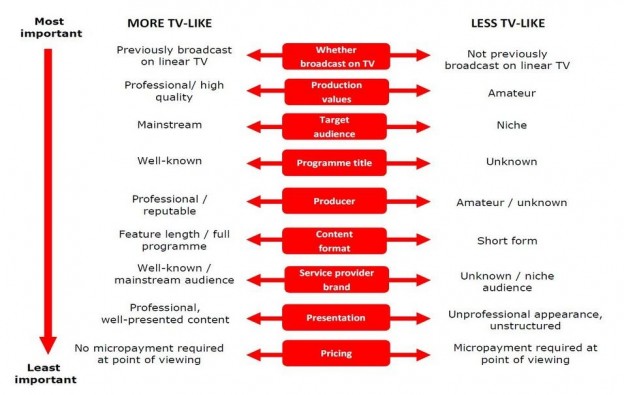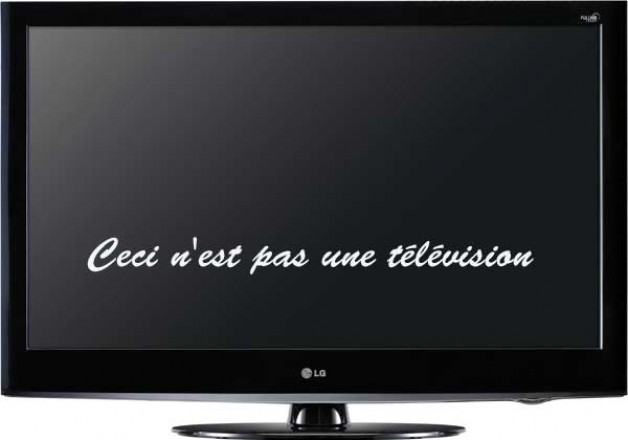Initially, the new UK legislation which attempts to bring internet porn and fetish sites under the same rules as DVD sales looked to be rather bad news for me. However, when one looks beyond the newspaper headlines, things are not so clear cut for web site operators or for the legislators. ATVOD have taken a very much stricter interpretation of EU directives designed to “protect children”, in spite of none of the research finding any actual evidence of harm to children.
In essence, all UK produced material on “TV-like” sites offering video on demand must comply to the strict 18R rating criteria and be behind a suitably specified age confirmation system, only then may it be licensed by ATVOD. The key issue is that it must be “TV-like” which is where the problem lies, as it seems this, like many issues, is left undefined and is vaguely covered by saying that definitions will be interpreted “dynamically” (read: We’ll see what we can get away with). I find this lack of definition both comforting and very worrying. Comforting in that there is still room to redefine things but chilling because it is so open-ended. It appears to have the potential to be extended to any web site of which the government might disapprove. “We must protect the children!” is a battle cry that few would disagree with and creates a knee jerk uncritical reaction. However, beneath this noble flag, some very sinister precedents are being set. For example, I understand that deciding who is in breach of regulations is to be contracted out to private companies. It concerns me that ill-defined regulations should be interpreted by companies run for profit and not directly accountable to the public.
As Ofcom will arbitrate on such matters, it is interesting to see if they will take notice of the public perception of “TV-like” garnered from their surveys. It strikes me that most niche and amateur UK sites are clearly ‘less TV-Like’ and most definitely not comparable.

Section 368A of the CA 2003 sets out the meaning and defining criteria of an ODPS (“on-demand programme service”). One principal requirement for a service to be considered an ODPS is:
“(a) its principal purpose is the provision of programmes, the form and content of which are comparable to the form and content of programmes normally included in television programme services.”
This has been used successfully in the UC-SC case and others to argue that their site was not “TV-like”. In their appeal, Channel Flip argued the service was: (i) not broadcast on TV; (ii) had amateur production values; (iii) had relatively unknown programme titles; and (iv) involved short-form content. Whereas, the BBC argued that “links, whether pieces to the camera or otherwise, are a key characteristic of the form of television programmes”. Without them, a programme would be a series of unrelated clips, which is exactly what the services on YouTube were designed to be. Ofcom upheld the BBC’s and Channel Flip’s appeals, and replaced ATVOD’s determinations with its own decisions on the basis the services were not sufficiently “TV-like”.
Ofcom determined that users would not regard the Channel Flip and relevant BBC on-demand services as among competing options when they want to watch television programmes. They therefore did not require regulatory protection. The decision is likely to reduce the number of services that will be considered ODPS to services that directly compete for audience with television broadcasts
You can read the full article on Denton’s web page.
Further good news is that as the purpose of this site and its members’ area is to provide a resource of educational material and a chronology of the development of Japanese bondage into a performance art, such content does not fall within the Obscene Publications Act.
Material that is “for the public good on the ground that it is in the interests of science, literature, art or learning, or of other objects of general concern” is exempted. As my intent is to further emphasise the educational aspect anyway, I decided remove the very small amount of content that does not directly fit this purpose. Thus, there will be more emphasis on performances and tutorials. This does not that play or webcam sessions won’t be available. They will, as they are an ideal way to see shibari used how most students will use it. Whilst you can learn a lot from watching the top nawashi performing, private play is very different. By watching these sessions, you will learn a far more informal and ad hoc way of tying. As they are shot with friends and dedicated fans doing out of a love of rope, you will also find them quite different from staged shoots with professional actors and an emphasis on maximising the hardcore content. In many professional shoots, the rope is secondary as it is merely a vehicle for a prurient video, for us, the rope is all.
I have simply chosen to exclude the more gratuitous elements to concentrate more on the rope. This is not say we will be becoming puritanical. Shibari is sensual, SM and sometimes sexual. That’s why we do it, right? As they say, if it’s not dirty, you are doing it wrong 😉 If you are looking for one-handed viewing material, you might be a bit disappointed unless you prefer something more artistic and less graphic than usual. We don’t try to be a porn or fetish site, we have Kink.com and others who do that job admirably. I don’t even want to even think about competing in that field as our intent is to elevate shibari further as a performance art, dragging it out of the shadow of porn, and raise the skill of those engaging in it.
As far as I can tell, this site is quite a long way away from even the broadest interpretation of the new legislation. I suspect as the law gets tested and the public attitude fails to support the narrow definition, it will either fall by the wayside or simply become unenforceable.

